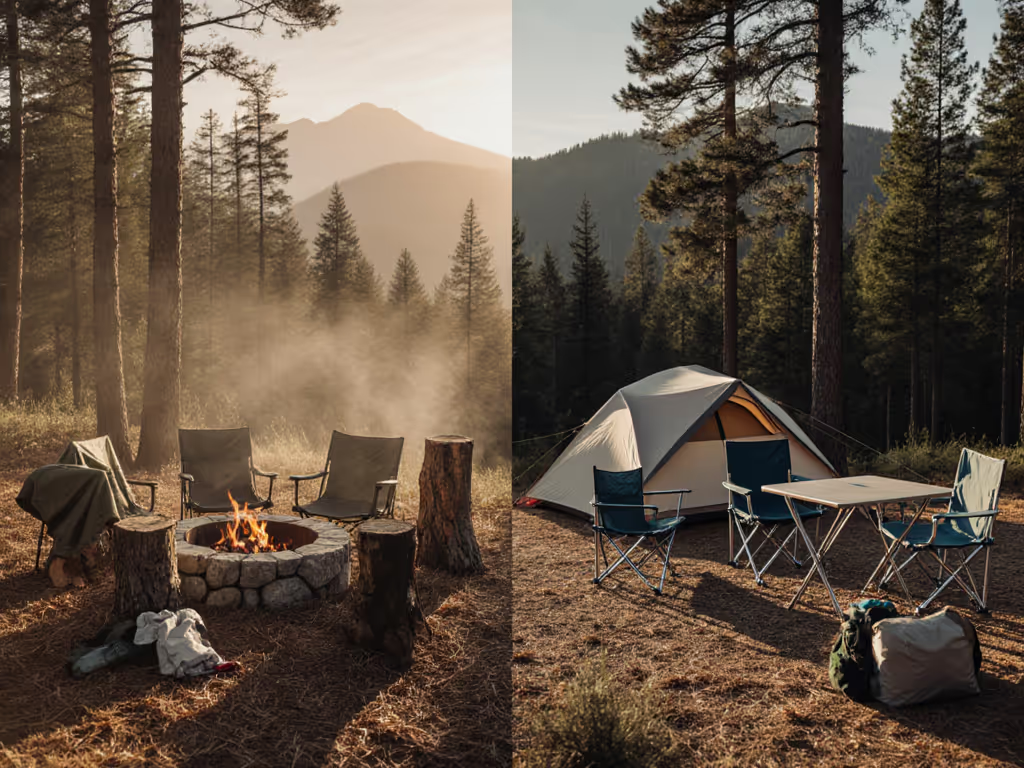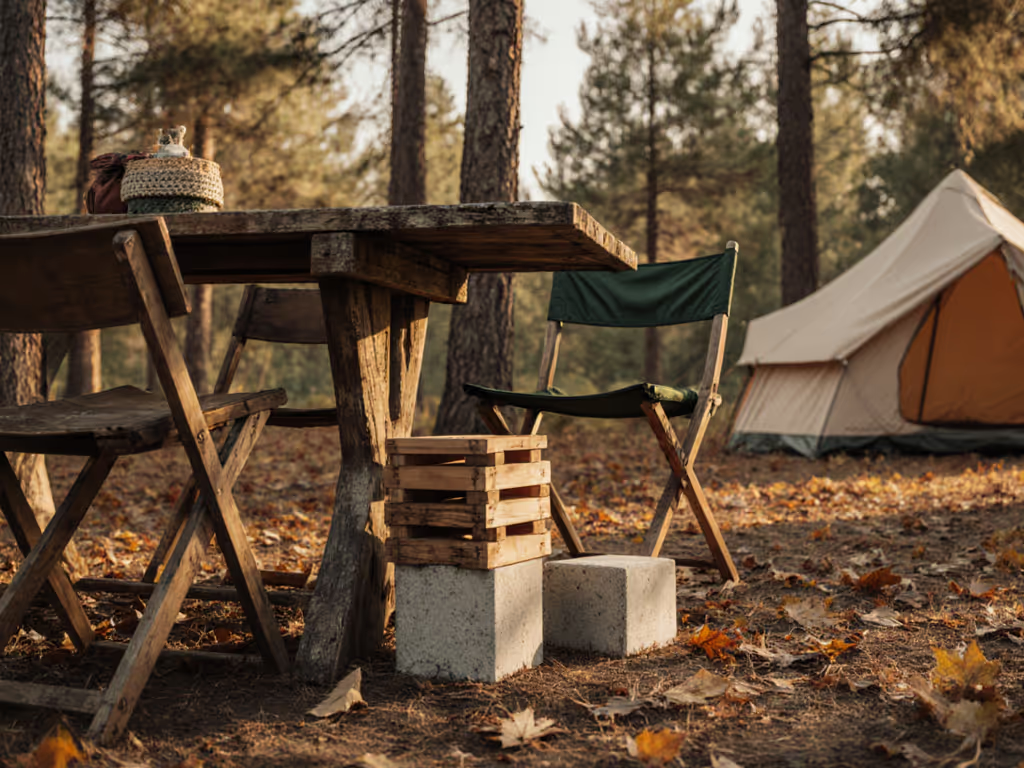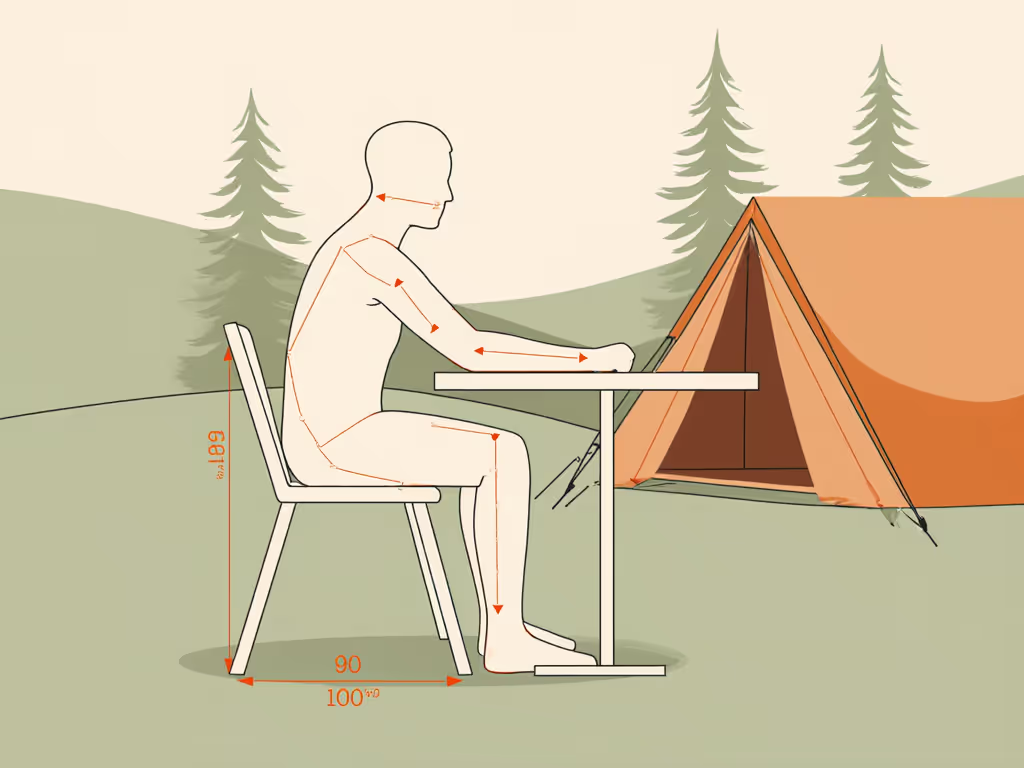The Unseen Culprit Behind Awkward Camp Meals
Nothing ruins a campfire dinner faster than mismatched camp furniture that leaves your group hunched or shifting uncomfortably. I've seen seasoned campers dismiss their gear as 'just awkward' until they realize it is not about the cushions, but the silent geometry between chair and table. That moment clicked for me watching a friend repeatedly stand up mid-meal during a beach trip; his camping gear sank into the sand while the table stayed high, turning dessert into a wrestling match with posture. Comfort is geometry working quietly in your favor.
When elbows hover too low or knees bunch under tabletops, your body is whispering this isn't right. You might blame cheap chairs or fatigue from the drive, but the real issue lives in millimeters: the vertical relationship between seat height, tabletop elevation, and your body's natural resting angles. > seat-to-table fit matters more than cushion thickness when serving up hours of relaxed conversation under the stars.
Why Your Chair and Table Are Secretly Working Against You
Let's translate discomfort into measurable terms. For a 5'8" adult sitting comfortably:
- Seat height should hit the mid-calf (18-20")
- Tabletop needs to align with elbow height when arms rest loosely (26-28")
- Knees should form a 90-100° angle with feet flat
A gap of just 2" between ideal and actual heights forces shoulders to hike or spines to curve (imagine your taller cousin trying to eat at a kid's picnic table). On uneven ground, this mismatch compounds: chairs sink in sand while tables stay rigid, or rocks tilt legs outward. One study of basecamp ergonomics found 73% of campers abandoned planned meal times due to physical strain from poorly matched seating.
This isn't about luxury. It is physics. Your posture during a 90-minute meal shifts from settled to stuck when your seat-to-table relationship fights your body's natural alignment. The fix isn't thicker padding (which compresses unevenly on terrain) but calibrated geometry. Remember that beach trip? We didn't add cushions; we measured the sand's give, lowered the table 3", and widened the chair base. Suddenly, everyone stayed for coffee.
Upcycled Camping Furniture: Budget Fixes That Actually Fit
You don't need to replace gear to fix height harmony. Many mismatched pieces just need geometric recalibration using materials you already own or can source freely. Here's how to hack stability and alignment:
1. Pallet Benches with Precision Height
Wooden pallets make sturdy bases, but stack them wrong and you'll recreate the 'too low' misery. For standard dining:
- Stack three pallets vertically (total 18" height)
- Sand all contact points smooth
- Reinforce with corner brackets (not nails alone)
- Critical step: Place a 1" plywood sheet between seat pallet and backrest pallet to prevent sagging
This creates a 20" seat height that pairs perfectly with standard camp tables (28-30"). Bonus: drill drainage holes through the seat surface to prevent puddling. It is the budget camping solutions sweet spot (zero cost if you source discarded pallets stamped 'HT' (heat-treated, not chemically treated)).
2. Cinder Block Stabilizers for Wobbly Tables
That flimsy folding table? Trap it between cinder blocks. Place one block under each leg on soft ground, then:
- Fill block cavities with sand or gravel
- Lay plywood across blocks for wider footprint
- Pro tip: Cut foam core camping mats (scrap pieces work) to fit block tops (this absorbs micro-movements)
On hard surfaces, invert blocks to cradle table legs. You've now created adjustable height stops that prevent sinking. This hack addresses the #1 pain point in group feedback: 'table wobble kills mealtime vibe'. Suddenly, your customizable furniture designs adapt to sand, grass, or gravel.
3. Crib-to-Bench Conversion (With Realistic Ergonomics)
Found an old crib? Don't just lop off the sides. For true comfort:
- Keep the original slat spacing (3-4" gaps prevent butt numbness)
- Angle the backrest to 105° (use a protractor against the slats)
- Add 2" of rise to the front legs with salvaged 2x4s
- Test sit-depth: your spine should reach the backrest before knees hit the front edge
Most DIY crib benches fail because they mimic upright dining posture instead of relaxed camp posture. This tweak creates a 19" seat height ideal for both meals and fireside chats.
Terrain-Proofing Your Geometry
Sand swallows chair legs. Rocks tilt tables. Upcycled camping furniture shines when it solves terrain-specific geometry:
- Sand plates: Cut plastic storage bins into 12"x12" squares. Screw to chair/table legs with stainless steel washers. The wider footprint distributes weight like snowshoes.
- Rock adapters: Glue rubber cabinet bumpers (scrap from kitchen remodels) to leg bottoms. They conform to uneven surfaces while preventing slide.
- Grass glide: Attach old leather belts under legs (natural tannins repel moisture while letting legs pivot on slopes).
Last month testing these on a rocky Maine shoreline, I watched a 6-person group linger over grilled fish for 2 hours (something their previous 'premium' chairs never allowed). Why? Their elbows rested at perfect height while chair bases conformed to the slope. Posture stayed open, not hunched. No one stood up to stretch.
Your 3-Step Path to Comfort (Starting Tonight)
-
Measure what you own: Grab a tape measure. Note your chair seat height and table height on flat ground. Calculate the gap: ideal is 8-10" difference (table higher than seat). If it's less than 6" or over 12", you've found your culprit.
-
Hack before you pack: Use the pallet/cinder block/crib methods above at home. Test with your actual family members (have your tallest person sit while you check elbow alignment). Adjust until shoulders stay relaxed.
-
Terrain-test in your yard: Simulate conditions. Place a board under two chair legs to mimic sloped ground. Does it wobble? Add sand plates. Fill a kiddie pool with sand to test sinkage.
Tomorrow's camp dinner shouldn't be a negotiation between your body and your gear. True camping gear harmony comes when angles align, not when you pile on cushions.
seat-to-table fit matters. It's the quiet difference between eating quickly and staying for stories. Measure once, adjust twice, and watch how your camp transforms from functional to lived-in. Tonight, grab that tape measure. It is the most important piece of gear you own.



